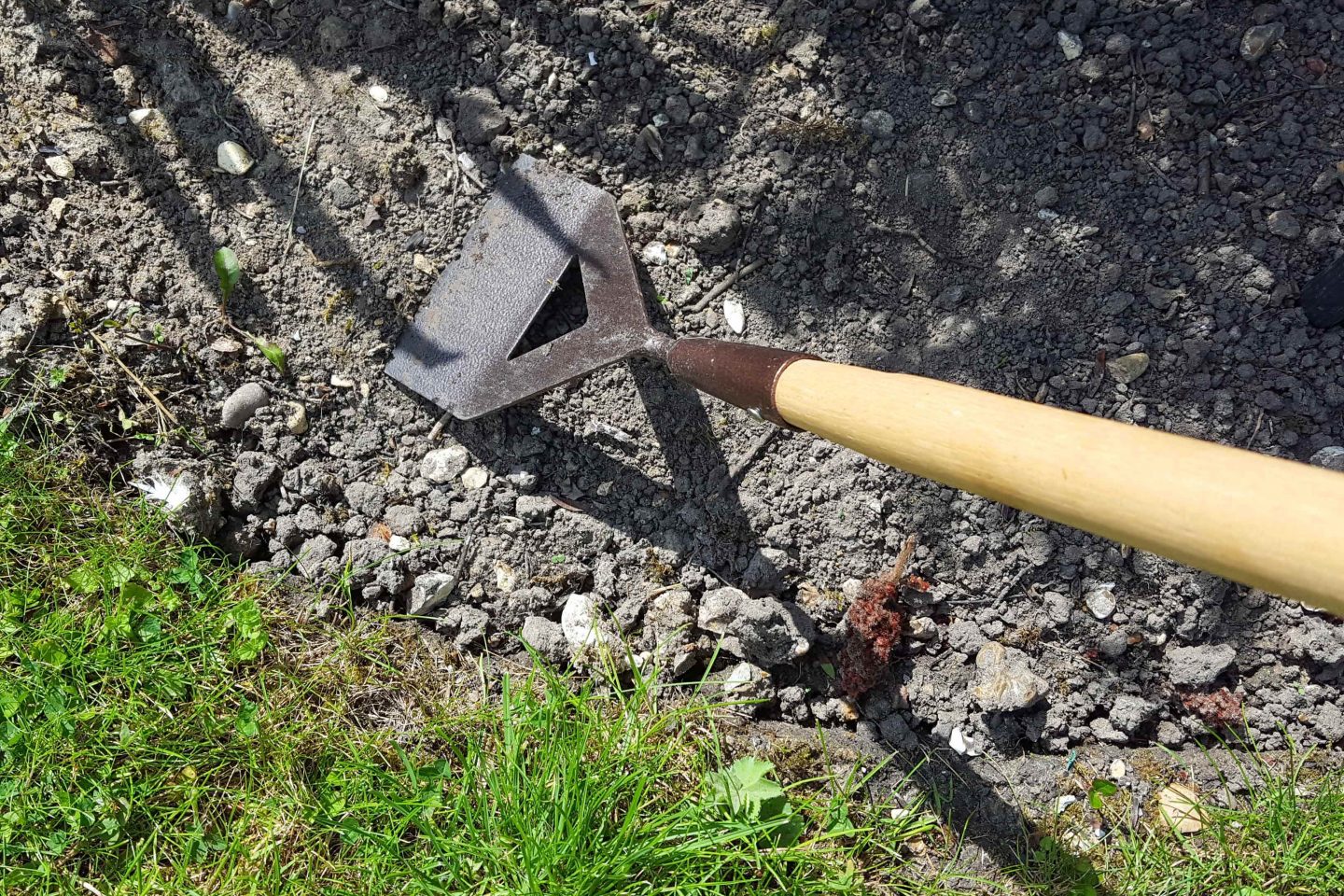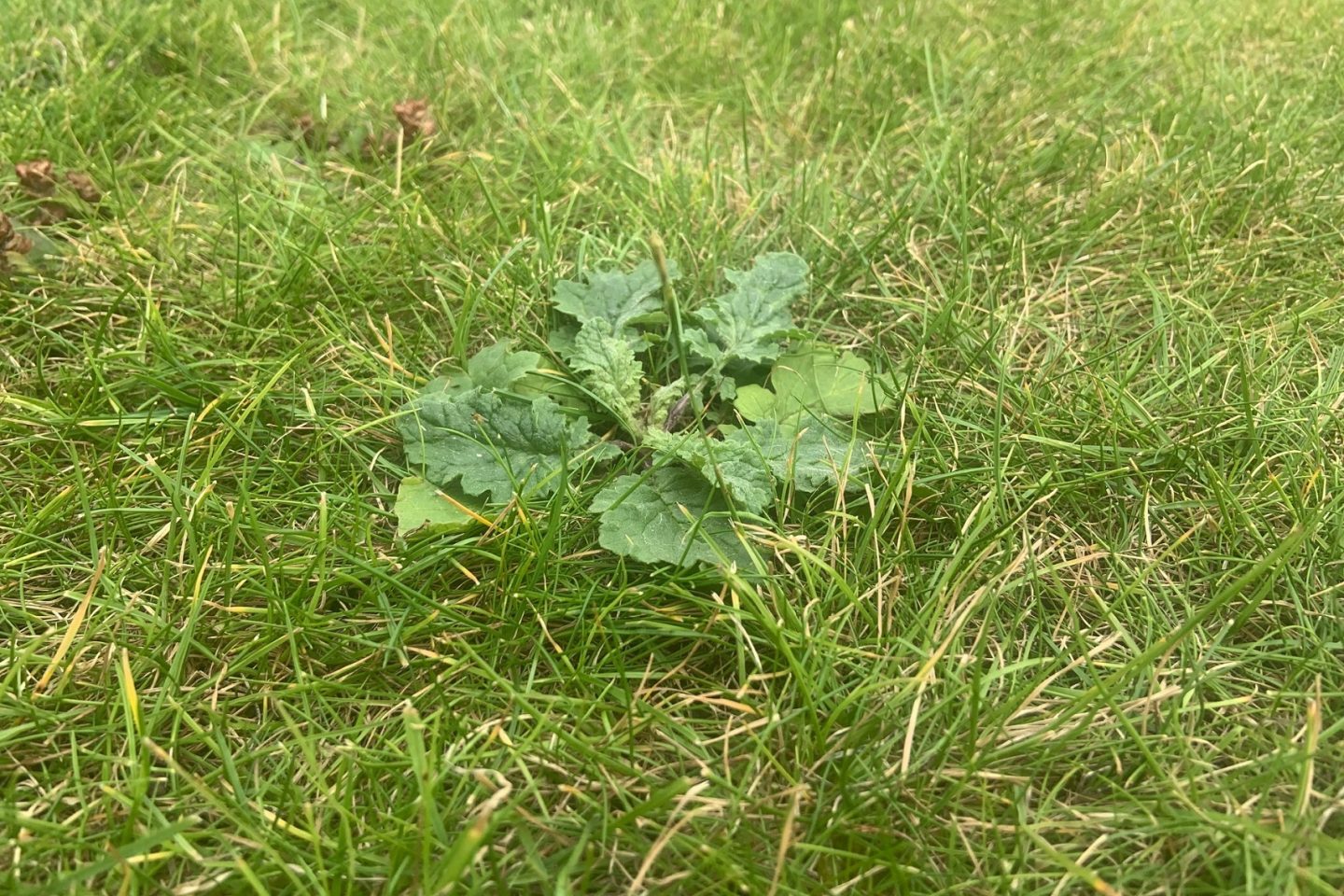Helpful Information
Timing: All year around (rarely needed in winter)
Where to do it: Outdoors
Garden space: Large garden, small garden, balcony

Timing: All year around (rarely needed in winter)
Where to do it: Outdoors
Garden space: Large garden, small garden, balcony
Researchers have found that dandelion seeds can travel more than 1km in the wind. Most seeds will only fly a few metres away.

There are some things you need to do in the garden for your plants to thrive. Like watering, for example. There are other activities where people have different opinions. Like how often to mow the lawn, or whether to weed or not.
You might hear people say a weed is just a plant in the wrong place. Whether a plant is in the right or wrong place can be a matter of personal taste.
Some gardeners dislike dandelions. But, those long roots that are so difficult to remove help aerate the soil. And, they are a source of food for pollinating insects.
These are some of the reasons weeding your garden is a good idea:

One of the most important parts of weeding is knowing whether a plant is (in your opinion) a weed or not.
It is usually easier to remove weeds while they are still small. As they grow, their roots get bigger. This makes it harder to remove them without damaging other plants.
The problem is, it can be hard to tell what a plant is from those first green shoots and leaves. When you are starting out, you may need to let some weeds grow a little bit so you can see what they are. Identifying plants when they are small will get easier as you get to know your garden.
To get you going, read our guide to some of the most common weeds you will come across.
If you have sight loss, identifying weeds can be particularly challenging. You could place a bright coloured label in front of your most loved plants to avoid weeding them out. You could also plant in blocks or lines so it’s easier to tell the wanted plants from the weeds.

Essential items
Optional items

You can find many different tools for weeding. The right one for you will depend on your garden layout and what’s most comfortable.
If possible, it’s a good idea to hold tools before buying. This way you can check the weight, grip and length feel good.
It’s possible to pull out small weeds and ones with shallow roots by hand. Just pop on gardening gloves and go. You will need a tool to remove weeds with deep roots, like dandelions, otherwise you are at risk of strain.
Weeding tools to avoid bending

If you can’t bend easily, weeding may seem very difficult. You could adapt your garden so you are not working at ground level. Installing raised beds or elevated planters brings the soil closer to you.
You can also find different long-handled tools to help weed at ground level with less bending. This is especially important if you have a bad back.
A full length garden hoe is one option. There are many varieties of hoe. A Dutch hoe is perhaps the most commonly used.
Look for a lightweight version that is comfortable to hold. Repeated movements with a hoe can take quite a lot of strength. The chopping action could also cause back strain.
“Sit on a chair and use long handled tools to weed if mobility is an issue. Put weeds in small trugs or leave to break down on the soil.” – survey respondent, gardening and dementia

A long handle push pull weeder (sometimes called an oscillating hoe) cuts weeds with a push-pull motion. It reduces bending, but you need to be comfortable with the back and forth motion.
A swoe hoe has an angled head. It is particularly useful when you are weeding in a restricted space. This includes getting around and behind established plants.
A weed slice also uses a push pull action. It has a compact, moon-shaped head which makes it useful for tight spaces.
If you are weeding at ground level from a seated position or in a wheelchair, a lightweight long-handled fork, trowel or push-pull weeder might work best. You can also find shorter handled hoes.
Hand tools for weeding
Hand tools can be used for weeding in beds and borders, if you are happy to work from a kneeling position. They can also be used to weed in raised beds and planters.
You could keep it simple and use a hand trowel or garden fork.
Some people find a hand cultivator effective. The prongs are designed to break up the soil, but are equally good at getting out shallow-rooted weeds.
Look for tools with easy-to-hold grips. You can find ergonomic hand tools, either with the handle at a right-angle or with curved handles. You may find these more comfortable.
You can find plastic hand tools. These will be lighter to hold, but may be less effective for weeding.
You can also find multi-change handles, if you want the flexibility of a longer or shorter tool.
Tools for deep-rooted weeds
Some gardens have a lot of weeds with deep roots, whether in borders or your lawn. It can take a great deal of effort to remove deep roots completely using a garden fork, spade or trowel. A traditional hoe may well just cut through the root, allowing it to regrow.
You could use a long-handled weed puller or root remover tool. These typically work by using your foot to press the tool into the ground, then pull the weed back up, roots and all.
A long handled bulb planter can also be used. It works in a similar way to a weed puller.
Tools for weeding paving and patios

If you have paved areas with cracks, no matter how small, you will be amazed to see green shoots poking through.
Depending on whether you weed kneeling or standing, you could use a hand weeding knife or long handled weeding knife. The thin blade is specifically designed for getting into tight spaces. These are sharp tools, so wear gardening gloves and take extra care. A cheaper alternative that works for some people is a thin screwdriver. Or, you could scrape over cracks with a spade or hoe. These will be heavier to use.
Another option is a weeding brush. These are typically made of wood with thick wire bristles. They help remove weed, moss and dirt from patios, paving and decking areas.
It may be tempting to reach for weed killer to tackle weeds. It is better for the balance of nature and wildlife to try and remove them manually if possible.

Weeds can pop up all over your garden. Depending on where the weeds are growing, you may need different tools (see above) and technique.
The trick with weeding in any location is to try and remove the entire root of the plant. Otherwise, it will quickly come back again.
As you pull a weed up, you will soon get the sense of whether you have all the root too, or if you need to ‘dig a little deeper.’
Protection from dust and mould spores
If you have a lung condition, weeding is an activity that could potentially release dust and mould spores into the air. You may want to wear a face cover / eye mask for extra protection if you are affected by either of these.
"I try to do small jobs and often. One big weeding job is satisfying afterwards but exhausting!"
- survey respondent, gardening and lung conditions
Weeding flower beds and borders
Weeds typically start appearing in spring. They may keep popping up until the weather gets cold in late autumn / early winter.
As the plants you want to keep in your beds and borders grow, you will need to be increasingly careful not to damage them as you weed.
Flower beds and borders offer the greatest flexibility in terms of tools you could use. See above for the many options, depending if you want to stand and weed or prefer to kneel.
There are ways you can make weeding less work and be more comfortable to do.
Weeding in raised beds and containers
Raised beds and containers have a limited depth of soil. This makes it harder for weeds to grow and spread.
Depending on the height of your raised beds and containers, you may be able to weed from a seated position or in a wheelchair.
Hand tools, or your own hands in gardening gloves, should be enough to remove many weeds in raised beds and containers.
If you have a weak grip, arm or hand pain, or want to make weeding more comfortable, add on handles can help. These keep your arm and hand in a natural position, avoiding bending and twisting. You can combine these with arm support cuffs.
Weeding the lawn

Removing weeds from a lawn requires a different approach to borders and containers. You don’t want giant holes all across your lawn!
It is best to use a tool that removes a compact piece of soil along with the weed, such as a long-handled weed puller. A screwdriver can also be used to remove deep weeds without causing too much damage. This will make it easier to fill in and re-seed these spots.
Of all areas of the garden, the lawn is one to really consider if it’s a weed or not. Dandelions, daisies and clover add variety and bring great benefits to wildlife. You could just leave them be.
Patio and paving

Running your paving knife or brush over and between cracks is the best way to remove weeds.
You may have some difficulty removing deep-rooted weeds from cracks. Some gardeners use hot water, or targeted weed killer. Exercise care and caution with either of these.
We also advise against a mixture of salt and water. Salt can be very damaging to other plants
You could deliberately grow plants you want in cracks. Creeping thyme is a good option, also giving off a lovely scent.
Once you have cleared weeds, you need to pick them up and dispose of them. If you wish to avoid bending to do this, you could use a long-handled leaf grabber or litter picker.
It is best to put weeds in your garden waste collection. When you put weeds on your compost pile, seeds can stay in the compost. This creates the risk of the unwanted plants returning to your garden when you use the compost.
If your garden waste collection is on wheels and easily accessible, you could move it directly to where you are working. You can pick up weeds and put them straight in. If this is not possible, have a container or bucket where you weed. You can then carry it to the garden waste once done.
If you find a bucket hard to carry, use a wheeled garden caddy or two-wheeled wheelbarrow to carry weeds to the waste bin.
If you are weeding ahead of planting, now your soil is clear and ready for your new plants!
If you are just weeding as part of regular maintenance, enjoy a good rest. Congratulate yourself and get ready to do some more another day.
If you are not in the mood or are lacking energy for weeding, don’t worry. Our gardens don’t need to be pristine all the time. Just do it another day when you feel like it.